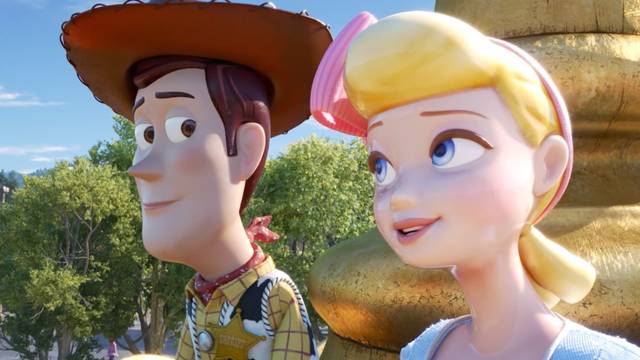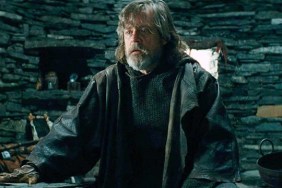When it was announced, the idea of Toy Story 4 seemed like a dubious prospect at best. The first three films are nearly perfect in every way imaginable. After Toy Story 3‘s perfect and satisfying ending, how could Pixar possibly top the previous effort? By telling perhaps their most personal story yet. Toy Story 4 asserts itself as the pinnacle of Pixar’s ability to craft a genuinely good sequel. It also proves the pitfalls and limitations of telling essentially the same story with minor alterations.
As a longtime storyboard artist for Pixar and a credited screenwriter on Inside Out, Josh Cooley makes his directorial debut with Toy Story 4. From the opening prologue and montage alone, Cooley makes it clear that the film was in good hands. Cooley’s direction is surprisingly confident and assured. Toy Story 4 is very much in line with its predecessors. Perhaps the most impressive aspect of Cooley’s direction is the dynamic vocal performances that he got from the cast.
Getting The Gang Back Together

The Toy Story films have always boasted stellar actors and actresses. As the emotional backbone of the franchise, Tom Hanks delivers another heart-wrenching vocal performance as Woody. In fact, Woody’s journey in Toy Story 4 represents the emotional and thematic core of the story. It’s surprising, only because it takes Woody’s character arc in some unexpected directions. Franchise newcomers Keanu Reeves, Keegan-Michal Key, and Jordan Peele are all terrific. They elevated characters who could have easily been non entities.
Similarly, Tony Hale perfectly embodies Forky. He is simultaneously the most fascinating and the most problematic character that Pixar has ever created. However, the real MVP of the film is Annie Potts. Her understated vocal performance as Bo Peep is a revelation. It’s been twenty years since we’ve heard Potts’ voice in one of these movies, which makes it feel like a different character altogether. This allowed Potts to bring several new layers to Bo Pepp.
Salvaging The Story
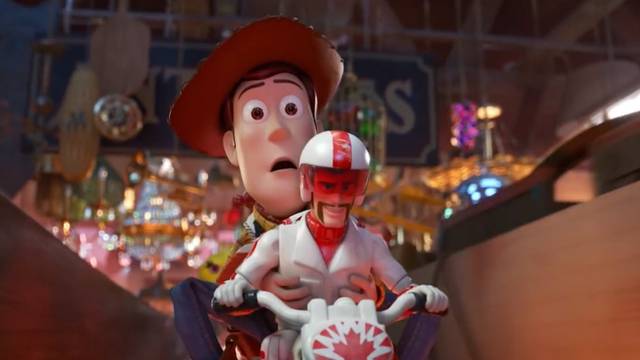
Each film in the franchise has seen a fair share of production hiccups, and Toy Story 4 is no exception. While Stephany Folsom and Andrew Stanton wrote the screenplay for Toy Story 4, the story originates from ousted studio head John Lassiter, as well as Folsom, Stanton, Cooley, Rashida Jones, Will McCormack, Valerie LaPointe, and Martin Hynes. It took that many writers to come up with a script that’s essentially a recycled version of the three films that came before it. The script is serviceable, but there’s no “ah hah!” moment in the story where everything comes together. It’s not groundbreaking, but it is fruitful.
Reeves gives an energetic performance as Duke Caboom, but his underwritten backstory is unnecessary and wasted. His arc simply lands with a giant thud. The movie also tries to make viewers care for Bonnie just as Woody does. Unfortunately, only a few minutes are spent on their relationship before whisking the characters away on the adventure. Consequently, the stakes become exponentially lower because the audience never establishes a connection to Bonnie.
Existential Realism
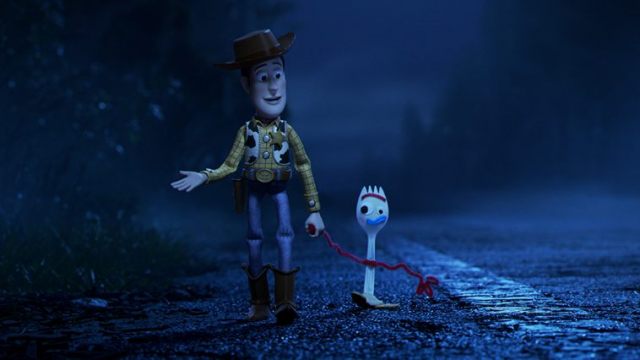
At its core, Toy Story 4 grapples with themes of loss and regret, second chances, and finding solace for past mistakes. It also explores what it means for Woody to not be the main toy. This finally forces him to think for himself, which allows him to find a sense of purpose. Woody gets to re-evaluate his priorities, even if it means going against his instincts by taking a leap of faith.
Forky is another thematically complex character that challenges Woody’s worldview. He’s also the most existentially-rooted character that Pixar has created. The idea that Forky doesn’t necessarily want to be a toy is an interesting philosophical conundrum that Toy Story 4 never entirely solves. However, the theme of trash vs. toy also reflects itself in the character of Gabby Gabby; which is a nice touch. The film also explores how perspective and time can change your view of the world. It’s a refreshing angle, especially for a plot that could have easily retreaded the same themes as its predecessors.
Forky’s sentience is questionable, but he may be the smartest character in Toy Story 4. That’s fascinating, especially in the philosophical context of existential realism. It explores the unresolved conflicts between identity, purpose, and being. At the same time, the movie as a whole is inherently problematic because it breaks the rules of the world. The film also raises questions about Forky’s sentience that it’s not necessarily prepared to answer. Despite this, it remains one of Pixar’s best sequels.
Perfecting Their Craft

Toy Story 4 is easily the most ambitious project that Pixar has embarked upon yet. It features original set pieces that have dynamic camera movement and motivated framing. Cooley’s background as a storyboard artist helps ground the film with a sense of near-photorealism. The cinematography by Patrick Lin and Jean-Claude Kalache is also impressive. Toy Story 4 easily offers the most colorful visual palate of the series thus far. The lighting and animation are superb as always, with texture work and fabric rendering that is light-years ahead of its predecessors.
This film doesn’t reinvent the wheel, but it nearly perfects it. The film also showcases human characters who are better realized than ever before in a Pixar movie. The work in animating and rendering the nuances of the eyes is unparalleled. It’s as close as possible to eliminating the uncanny valley in animation. Conversely, Randy Newman’s music is serviceable, but not necessarily memorable. Aside from some interesting music choices that wonderfully foreshadow the storytelling, it’s just like every other film by Newman.
Never Say Never
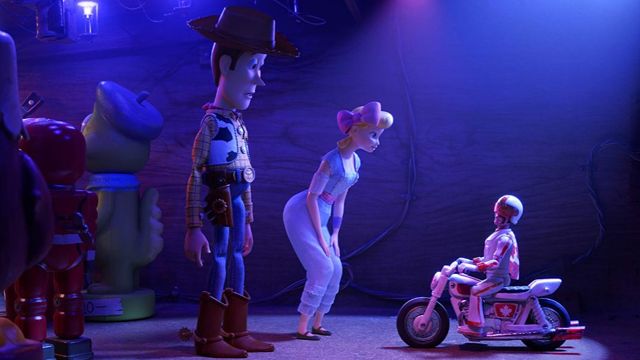
By any other metric than this franchise’s previous success, Toy Story 4 would play like gangbusters. But because it’s a potentially unnecessary sequel to arguably the greatest trilogy of all time, the bar is naturally higher. Toy Story 4 is heartwarming, but not emotional, because it’s far more of an optimistic ending for Woody than ever before. However, there’s not enough attachment to the new characters for his arc to feel fully earned.
Toy Story 4 – among many other things – is about letting go of your attachments. This notion is ironic, only because the film was made during perhaps the most significant regime change in Pixar’s history. It represents both the end of an era and the beginning of a new one, which is fitting considering the subject matter. In this respect, Toy Story 4 is also a strong statement about embracing change, while also living up to the legacy of the past. In the end, Toy Story 4 is proof that not only should you never say never, but also that we should never doubt Pixar’s ability to craft compelling stories – even if it is a sequel to one of the most beloved franchises of all time.
